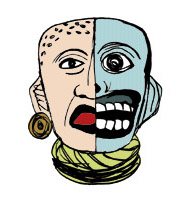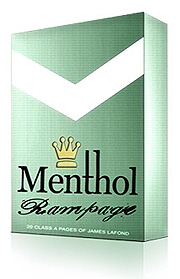Introduction
This is a context piece for people interested in the history of boxing. It is just an outline and omits far more than it presents. If you are interested in more historical details about a given era contact me and I’ll do a short article to address the topic you are interested in.
I hope you find this helpful.
Boxing enthusiasts will naturally disagree with the commentary attached to the Pay-per-view Era. Boxing writers will have a problem with my definition of the Old Time Era. Other than that, the eras presented are generally agreed upon by the boxing geeks out there. As far as the ancient period, I am the only expert on that subject, so if you disagree, meet me in 324 B.C. in Pakistan and we’ll let Alexander decide just before he exterminates the Kishatrias.
James LaFond, 6/3/2012
Antiquity (1700 B.C. to 551 A.D.)
This period encompasses Mesopotamian, Egyptian, Cretan, Greek and Greco-Roman boxing traditions. Everything but the Greco-Roman tradition is covered comprehensively in The Broken Dance series of ancient boxing books available in the ancients section of this website.
I promise the reader that there is much more to ancient boxing than what modern sportswriters would have us believe.
The Middle-Ages: (600s through 1600s)
There were four obscure boxing traditions in the period: Irish, English, Italian and Dutch. Most of these were attempts to resurrect ancient Greco-Roman boxing as a substitute for lethal dueling. The Dutch tradition was actually an empty hand augment for dueling.
The Pioneer or Bare-knuckle Era (1700 to 1892)
You might say this began officially in 1688 with the public posting of a boxing challenge, or in 1719 when broadsword master James Figg claimed the first heavyweight boxing title. At first, until the mid 1700s, it was something that fencing masters did as a side-show.
Eventually, and up to the messy end, bare-knuckle boxing matches were a criminal enterprise supported by the highest class and the lowest class [collectively known as ‘The Fancy’ and later in America as the ‘Sporting Set’ or as ‘Sports’ or ‘Sporting Men’], much to the disgust of the civically dominant middleclass.
From 1688 through the 1800s many improvements in boxing technique and training were made. Fights were fought according to Broughton’s rules from 1743, and these were eventually revised in the early 1800s to become the London Prize Ring Rules or LPR. Manuals were written and a sport called ‘sparring’ was born. This practice with gloves was the seed of modern boxing.
After the American Civil War gloves began to gradually come into competitive use primarily as a way to avoid legal prohibitions against prize-fighting. Up until the end of the era, in the early 1890s, the sport was still pretty much a gangland affair, even though it had generated the first sports superstar, John L. Sullivan.
Old Time Boxing (1892 to 1919)
By 1885 boxing contests were being fought according to the Queensbury Rules, which are the basis for, and were similar to, our current gloved boxing rules. Although these rules were originally written for matches between gloved ‘sparrers’ of the upper class, and not the actual prize-fighters, they were adapted for prizefighting to facilitate the mainstreaming of the sport of boxing. This development has a modern parallel in the recent efforts by Las Vegas casino interests to gain acceptance with the Nevada State Athletic Commission for MMA.
The events that bracket this period are the first heavyweight title bout under Queensberry Rules between John L. Sullivan and James J. Corbett on September 7th 1892, in New Orleans, and the passing of the Walker Law in New York State in 1920, which effectively legalized the rendering of a decision after a boxing match. The first two decades of the 20th Century in boxing is often referred to as the ‘No Decision Era’. Boxing was now out of the legal no-man’s land it had been in, and was poised to become a national sport.
There was a lot of technical evolution in this period, as fighters took two generations [I reckon a boxing generation as 12-15 years.] to finally adapt to the use of the padded glove. Boxing writers often think that old-time boxers were unskilled based on a lot of the preserved film and pictorial evidence. The fact is fighting forms evolve slowly, and those old-time fighters would have been much better suited for MMA than are modern boxers, as they practiced small glove methods, were active in the clinch, and fought much longer fights.
Most boxing historians date the old-time era until the late 20s and early 30s, which excludes fighters who fought in the ‘No Decision Era’ from comparisons with later fighters who began in the 1920s. This is practical since comparing the two generations is problematical from a record-keeping perspective. I respect this convention, but have tried to consider the era breaks in a more evolutionary fashion.
The Golden Age of Boxing (1920 to 1946)
After 1920 fights were rarely scheduled for more than 15 rounds with a recognized upper limit of 20 rounds. Boxers would no longer have to slog through a 30, 40, or 60 round fight! This period saw the ultimate technical evolution of modern scientific boxing, and produced its greatest fighters, although many fought into the 50s and 60s. Socially this was the springtime of boxing, when the largest gates were drawn, and boxers were considered not only the greatest athletes but the toughest men and best fighters in the world. As with baseball many of the best fighters had their careers gutted by World War Two.
There was boxing all the time, for everybody who cared to go to a club, theater or stadium or tune in on the radio.
The Television Era (1946 to 1987)
This era, like the Old Time Era, is clearly bookended by two mass-communication watersheds in sports entertainment.
Just as the first experiments with motion pictures began early in the 1890s with boxing, the first experiments with televised sports began with boxing in 1931. You must imagine, with only one camera, separated from the announcer, how difficult it would have been to televise baseball or football. In our own time we take the camera-angle changes and all of the work done by the film crew and onsite film-editing staff for granted. This made boxing the obvious subject for early TV. By 1944 NBC was airing fights, and by ’46 Conn versus Louis became the first televised heavyweight championship.
Very quickly this apparently good thing crushed local boxing shows, the theaters that hosted them, and the clubs that fielded the fighters. Why watch Joe Shmoe and John Doe at the local club when you can get Joe Louis at home? As with many trends in boxing it took one or two generations of fighters for this to effect significant change in the talent pool. Less local pro shows [in Baltimore, a half dozen a week in the 1920s to as many a year in the 1990s] resulted in a steady decline in the numbers and quality of opposition faced by top boxers, eventually resulting in a gradual decline in their functional skill, particularly versatility in the ring.
The end of the free televised boxing and The Television Era came definitively when Mike Tyson KO’d Michael Spinks in the first round in Atlantic City, on June 27th 1987. This fight dovetailed with a number of other factors to mark the end of a long transitional era in boxing. The biggest factor was economic. Although this was a closed circuit event seen in theaters, it opened eyes to the potential money of pay-per-view just as the technology was on the horizon. I remember listening to a live sports radio broadcast just after the fight, as some rich guy called into the radio host from what must have been a huge primitive car phone and gave the blow-by-blow. By morning everybody was talking about how many millions of dollars per a second Tyson had made.
Boom-Boom Mancini had killed a man in the ring on national TV on a Saturday. Title fights were being reduced to 12 rounds, which was a sea-change in boxing, making a title fight only 120% of a regular fight as opposed to 150% of one. I have no argument with anyone who would like to mark the end of this era as April 6th 1987 when Marvin Hagler chased Ray Leonard around an unusually large ring, with two extra ounces of foam in his gloves, for all 12 rounds of the first 12-round Middleweight title defense. Economically Tyson-Spinks was bigger. But to the heart and soul of boxing, Leonard’s run-and-hug theft of a title he could not defend was a deathblow. Networks were bowing out and premium channels and pay-per-view was coming into vogue.
Now boxing was just available some of the time for some of the fans.
The Pay-per-view Era aka The Death of Boxing (1988-present)
By 1997 500 million a year was being spent on pay-per-view boxing events. Boxing was now just about the marketability of big names, and perfect records were paramount. Thanks to the deterioration of Olympic Style amateur boxing as a sport [with zero-clinch tolerance—see Chapter 3 Sidebar—and no points awarded for knockdowns], the rarity of fights between the top men in a given weight class, and the infrequency of fights in general, boxers were relatively less skilled and less exciting than ever in the pro ranks. This period can rightly be seen as the time when boxing matches were largely decided by the matchmaker, with almost no pro bouts and less than half of title bouts being competitive.
The big-name promoters destroyed a sport with dwindling human resources and filled their bank accounts. A sport that began with eight weight classes in the Old Time Era now had 17 weight classes. The sport which once had eight champions now has 153! All of this subdivision of talent came to a crescendo in the 1980s and 90s at the same time that the talent pool had dwindled to a trickle. As of now, the USA, which traditionally supplied most boxers, typically only has one Top 10 heavyweight—and the USA has the biggest people in the world!
Thanks to the foresight of MMA organizations there is still a way to see the two best guys at a given weight fight, but it is not a boxing match. The fact is boxing is on life-support. There are still top trainers, rich promoters and talented boxers at the top, making big money. But local boxers are making less dough than they did in the 1980s and the only work for new coaches and trainers is in MMA gyms and fitness clubs. Intelligent, talented combat-oriented athletes finally have a choice between the poverty of entry level boxing and the NFL, NBA and MLB. They can get into MMA, join a team, and get a contract that has win bonuses, KO bonuses, and even ‘fight-of-the-night’ bonuses. And, when they are done competing, they can get paid for teaching self-defense instead of buying a share in their brother’s bar.
Let me stress this one fact. Every small town and big city neighborhood now has an MMA team with fighters training to compete, with usually at least one pro fighter. Most boxing clubs, in those few places where they still exist, have no pro fighters, and few actively competing amateurs. I remember the cries of protest from my family when I decided to box in the 1970s. They stressed more than anything the evils of boxing; that it was not a team sport, and just consisted of individual young men being manipulated by criminals. Although this is not altogether true of boxing, the stigma remains, a stigma that MMA promoters have consciously avoided by distancing themselves from boxing and boxing promoters, and aligning themselves with media organizations that promote extreme sports and the NFL.
A friend and I recently watched a non-title middleweight bout from the 1980s featuring Ray Leonard on the comeback trail, not at his best but still great. We only noted two clinches and the ref did not have to pry them apart. I recently watched two Floyd Money and one Bernard Hopkins title fight from 2012. Hopkins threw one punch and clinched. Floyd threw two punches and clinched. These men are considered to be our very best, yet an aging Leonard and his club-level opponent made them look like amateurs.
Could you imagine Ray Robinson seeing his sport now? A sport where you were once not considered a fit practitioner unless you threw at least 3-punch combinations in the ring is now head-lined by pot-shot artists; a sport where “Slapsie” Maxie Rosenbloom rather than “Sugar” Ray Robinson would have been honored as Boxing’s Best?
If you are a fight fan, do you want to watch a millionaire hug his hand-picked opponent until the referee pries them apart? Or would you rather watch two evenly matched athletes honestly trying to KO each other [because that KO earns them additional money] and, if one of them can’t handle the punches and clinches up, somebody gets slammed to the canvas anyhow? I’m coaching a dozen young men in boxing. Only one wants to box. The other 11 tell me that they want to “fight” and by that they mean MMA. Boxing might lose the fighters before the promoters and millionaire champions drive away the remaining fans.
Really, I love boxing and understand that you do too. But how do you attract the casual sports fan when the best middleweight* boxers fight like offensive linemen? Wouldn’t you rather watch T-Sizzle crush a quarterback for free than pay to see Hopkins hug a sweaty young man? I never cared much for the economy of boxing. I cared about the art. But the economics of zero-risk pro boxing drawing talent from Olympic ‘point-fighting’ is killing the art.
By-the-way, karate has also been subject to a long decline. The results have been likewise similar, with young, aspiring male karate practitioners wanting to practice their art in the MMA arena rather than on the karate circuit. You might visit ten local karate schools and be lucky to find three athletic young men. What was once a hardcore extreme sport has become largely daycare and women’s fitness.
* I refer to the middle-range of weight classes, being welter to light-heavy, where the power and the pace have traditionally coexisted to produce reliably exciting matchups. Sports writers tend to look at the heavyweight class to judge the health of boxing as a sport. I, looking at boxing as an art, have always thought that the heart of the game resided in the intermediate weight classes, hence the importance I placed on Leonard-Hagler as a landmark bout.
The Future of Boxing
Boxing has become extinct in the past and it will again, but hopefully not as long as humans live. It is a profoundly valuable ritual.
Unfortunately, the evidence indicates that boxing’s best days are in the past. What is more, it seems destined to become a marginalized hold-over sport like fencing. Such a fate would be a supreme irony. You see, in the 1920s, Aldo Nadi, greatest fencer alive, and survivor of at least one duel, decried the popularity of boxing, disparaging the fistic art as crude and barbaric and too emotional. That assessment sounds much like the criticisms of MMA by many of the boxing people I know, and by our current best, Floyd Money.
Hopefully Floyd Money does not share Nadi’s gift for prophetic irony.
Gods of Boxing
The First Boxers











